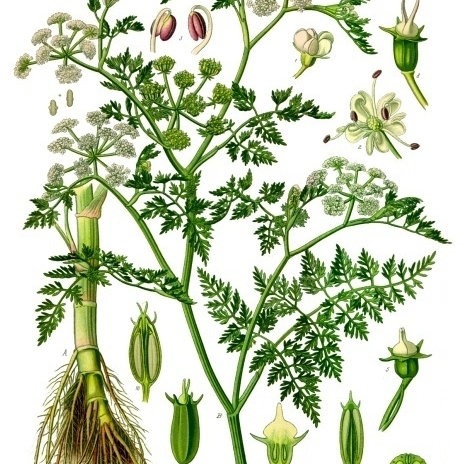Herbs, perennial, glabrous. Roots fibrous or fusiform to ovoid tubers. Stems erect, branching, decumbent, weakly diffuse or stoloniferous, hollow, angular, striate, rooting at basal nodes. Basal and lower leaves petiolate, wholly sheathing; blade 1–4-pinnate, homomorphic or heteromorphic to the cauline leaves. Umbels compound, loose, terminal and axillary or leaf-opposed; bracts absent, or occasionally 1; rays 4–15(–30); bracteoles numerous. Calyx teeth prominent, lanceolate, nearly as long as stylopodium. Petals white or pale pink, obovate, base cuneate, apex emarginate, with small incurved lobule, outer petals in umbellule usually enlarged (radiant). Stylopodium conic; styles elongate, erect or divergent, sometimes reflexed in fruit. Fruit ovoid or subglobose, slightly compressed dorsally or laterally, glabrous; dorsal and intermediate ribs slightly thickened, corky, or somewhat protruding, filiform, subequal; lateral ribs dilated, subtriangular, corky; vittae solitary in each furrow, 2 on commissure. Seed face plane. Carpophore obsolete.
Glabrous herbs. Roots fusiform or fasciculate-tuberculate. Leaves 1-3-pinnate, ultimate segments large, linear or minute, rarely reduced to sheaths. Umbels compound. Involucres and involucels several, sometimes few or none. Calyx teeth small, acute. Petals emarginate, with long inflexed tips, white; outer ones of the inflorescence often enlarged. Disk continuous with the base of the styles. Fruits glabrous, ellipsoid or globose, nearly terete; commissure broad; mericarps dorsally flattened, inner face flat; lateral primary ribs broad, corky; dorsal and intermediate ones often much smaller, sometimes obsolete, seldom all ribs subequal; ridges with 1 vitta. Carpophore 0.
Glabrous annual, biennial or perennial herbs, with fibrous or tuberous roots, often aquatic. Lvs 1-4-pinnate, sometimes reduced to linear fistulose petioles; segments broad to narrow. Umbels compound, often shortly pedunculate and lf-opposed, sometimes terminal; bracts present or 0, entire; bracteoles usually numerous, entire. Petals white or pale pink, somewhat irregular, with apex notched and inflexed; calyx teeth evident, acute. Fr. ovoid, cylindric or globose, terete, not beaked, spineless; commissure broad; ribs 5 per mericarp, the lateral usually grooved or thickened; vittae solitary in furrows.
Fr subterete, oval to oblong, the ribs low, broader than the intervals; oil-tubes solitary in the intervals, 2 on the commissure; carpophore wanting; umbels terminal and lateral, compound, the rays spreading; bracts few and small, or none; umbellets small; with unequal pedicels and a few lance-linear bractlets; sep conspicuous, lanceolate, persistent; pet white; stylopodium conic; glabrous branching perennials with pinnate or decompound lvs. 40, Old World.

